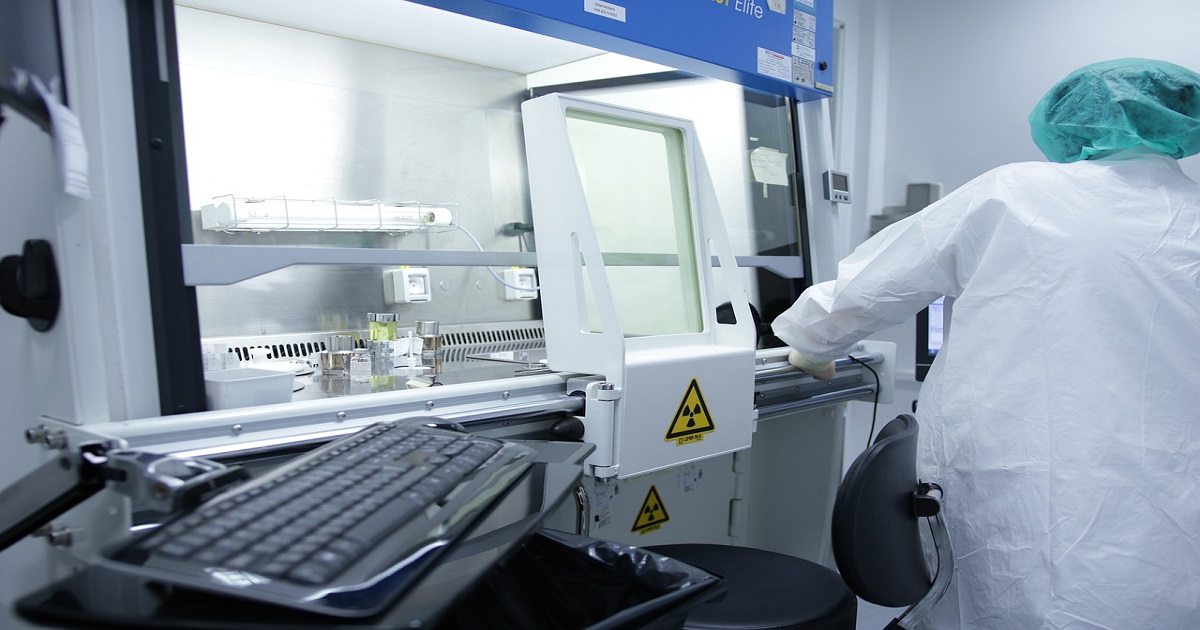Mesothelioma Help Cancer News

New Mesothelioma Treatment May Result From Study Focusing on The Deadliest Subtype of Lung Cancer
In February, MesotheliomaHelp reported on research from the Mayo Clinic that pointed to the Ect2 gene as a target to slow tumor growth in KRAS-positive lung cancer and mesothelioma patients. Now, in another study, researchers believe they have found one more way to fight this deadly sub-type of lung cancer.
Researchers from Norton Thoracic Institute, headquartered at Dignity Health St. Joseph’s Hospital and Medical Center in downtown Phoenix, focused their research on lung cancers expressing the KRAS and/or the LKB1 gene noting that these “mutations are associated with aggressive disease progression and poor patient prognosis, and have been historically difficult to treat.”
The team looked at the use of a WEE1 kinase inhibitor, AZD1775, an experimental drug from AstraZeneca available to researchers only, as an effective treatment in the KRAS or LKB1 expressed lung cancer population. The drug could lead to apoptosis, or cell death, upon treatment with chemotherapeutic agents such as gemcitabine, cisplatin, carboplatin, according to AstraZeneca.
The team found that in a mouse model with the KRAS/LKB1 NSCLC cell lines, the combination of AZD1775 and cisplatin extended overall survival compared with cisplatin alone. In mesothelioma and lung cancer patients, cisplatin is one of the most common chemotherapy treatments used. It is often used in combination with other chemotherapeutic agents.
“In this study, we highlight a therapeutic strategy that may be effective in a group of lung cancer patients without rational therapeutic options,” said Timothy Whitsett, PhD, assistant professor at Norton Thoracic Institute.
According to some reports, mutations of the KRAS gene (Kirsten rat sarcoma viral oncogene homolog) are found in 20 to 25 percent of lung cancers. These cancers do not respond well to standard treatments and are extremely challenging to treat. In a 2014 study conducted by Salk Institute researchers, the team found that lung cancer patients who have an alteration in the LKB1 gene had a “much greater rate” of metastasis.
Kinases function as drivers of a variety of forms of cancer, including mesothelioma. Many researchers have found that kinases are involved in the gradual transformation of normal tissue in the lining of the lung into malignant pleural mesothelioma after exposure to asbestos. Thus, the use of kinase inhibitors, such as AZD1775, should slow cancer growth.
Landon Inge, PhD, co-author and assistant professor, said, “We hope these findings spur new explorations for targeting this molecular subgroup, leading to better clinical trial design in the near future.”
The researchers plan to continue this research to identify patients “who will most likely benefit from the use of this type of therapy, and to inform future clinical trial design by selecting lung cancer patients with difficult to treat molecular alterations.”
Care for mesothelioma, a rare form of cancer caused by exposure to asbestos fiber, often follows the same protocol as lung cancer. Positive results in this study can mean positive results for mesothelioma patients. Approximately 3,000 Americans are diagnosed with mesothelioma each year. Currently, there is no known cure for the cancer.
Read the results of the study in the August 15 issue of Cancer Research.
Sources
- Cancer Research
http://cancerres.aacrjournals.org/content/early/2012/04/25/0008-5472.CAN-11-3481.abstract?sid=c98a9479-15e8-43da-8088-356c133a2536 - Mayo Clinic
http://newsnetwork.mayoclinic.org/discussion/mayo-researchers-identify-mechanism-of-oncogene-action-in-lung-cancer - Norton Thoracic Institute
https://www.dignityhealth.org/arizona/locations/stjosephs/about-us/press-center/press-releases/2017-08-18-researchers-discover-a-novel-therapeutic-strategy

Caring for A Mesothelioma Caregiver
One of the most difficult things in life is to see someone you love suffer. Patients who are diagnosed with malignant mesothelioma, or any cancer or life threatening illness, have a range of emotional ups and downs on their journey. The family member, spouse, partner or friend, that supports them also deals with an enormous emotional burden.
According to a statistic from AARP, approximately 44 million Americans provide 37 billion hours of care for their loved ones, whether it be sick, older or disabled people. The economic value of the services that family caregivers provide is estimated at approximately $350 billion annually.
This past week, a mesothelioma caregiver was sharing her story with me. She had notebooks full of the course of her husband’s mesothelioma journey. From his diagnosis to present day she had chronicled all the events, tests, procedures and surgeries that he had been through. She was encouraging other family members to keep records as she often has to advocate for her husband. She is able to do so by referring to her notebooks to remember dates and times and the corresponding discussions. It was the wife trying to get control of an uncontrollable situation.
As the conversation progressed, we started talking about how she was handling being a caregiver. It has been difficult to watch as her husband has lost weight, been uncomfortable, depressed, and anxious. It has affected her physical and mental health. As important as her job as her husband’s caregiver is, she needed to start to pay attention to her own health.
There have been studies about caregivers’ health. Caregivers have increased physical ailments as compared to non-caregivers. Caregivers also have higher levels of stress, depression, emotional problems, and cognitive problems. Another study found that strained caregivers had a 63 percent greater chance of death within four years as compared to non-caregivers.
Caregiving has many positive aspects. It can strengthen the bond between the patient and the caregiver. Many caregivers feel it is one of the most rewarding experiences that they have in their lives.
What can you do for a caregiver? The gift of time, stay with the patient for a few hours. Encourage the caregiver to go out, take a walk, see a movie, anything that they enjoy. Give the caregiver support by listening to their journey, experiences, and fears. Caregiving is a difficult, rewarding job- made easier with support!

Study Shows Pleural Mesothelioma Patients Live Longer With Trimodal Therapy
One of the biggest challenges in pleural mesothelioma care is determining which treatments to use on patients.
Oncologists are faced with deciding if a patient will benefit from surgery, chemotherapy or radiation, or a combination of the three.
Although each case is different, when mesothelioma patients are candidates for all of the options, which approach is the best?
Researchers report the results of a recent in-depth review of thousands of mesothelioma patient records points to the best survival when all three therapies are used.
A team of researchers from The University of Texas MD Anderson Cancer Center selected 20,561 malignant pleural mesothelioma (MPM) patient records, from the National Cancer Database for the years from 2004 to 2014, to evaluate patient survival. Noting that MPM is an “aggressive and rapidly fatal disease,” the team set out to determine the key predictors of mesothelioma patient survival.
Specifically, the team wanted to assess the difference in patients who first had mesothelioma surgery, then went on to have chemotherapy and/or radiation versus patients who did not have surgery.
The team narrowed the number of patients evaluated down to 6,645 from the initial selection and compared the results of patients with the following breakdown of treatment approaches:
- 2,166 underwent no therapy
- 2,015 underwent chemotherapy alone
- 850 underwent cancer-directed surgery alone
- 988 underwent surgery with chemotherapy
- 274 underwent trimodality therapy
The remaining 352 patients underwent another combination of surgery, radiation, or chemotherapy.
Although the researchers found that while any of the treatments alone were associated with improved survival, when chemotherapy and radiation followed cancer-directed surgery the” largest estimated effect was realized.”
Most importantly, patients diagnosed with epithelioid mesothelioma, the most common and treatable histological subtype of mesothelioma diagnosed in more than half of all mesothelioma cases, who received trimodal care had a median survival of 23.4 months vs. 14.5 months.
The team concluded that for mesothelioma patients, “Surgery-based multimodality therapy was associated with improved survival and may offer therapeutic benefit among carefully selected patients.”
MD Anderson’s Mesothelioma Program is comprised of a team of more than 30 experts representing medical oncologists, surgeons, radiation oncologists, pulmonologists and pathologists who work closely together to customize the best treatment for each patient.
Everyone on the team is considered an expert in their field and in mesothelioma. The Center cares for more patients with mesothelioma than almost any other center in the U.S., according to its website.
Read the full study in the Aug. 17 issue of Journal Of Clinical Oncology.

Our Mesothelioma “Aha” Moments
From time to time, there are moments in your life where things just click. Everything falls into place and makes sense, for good or for naught. Throughout my family’s journey with mesothelioma, we all had these “Aha!” moments.
The first of these moments came from my Dad himself. We were visiting the Flight 93 Memorial together as a family. While we were walking, he had to stop because he couldn’t catch his breath. He had been having some trouble for a few months, but he later told me that this was the moment he realized that something was seriously wrong.
For me, this moment of clarity came after my father’s diagnosis when we were directed to NYU Langone for surgery by a complete stranger. I realized that this was the answer to my prayers and that God was truly in control, something I always believed, but saw in complete transparency that day.
There were many times when we thought we understood what was going on. Dad’s scans were clear for a while, so we thought that the fight was over. He participated in a clinical trial, so we assumed that everything was working perfectly. Then, when the cancer returned, we thought we knew what to expect. We were utterly wrong.
Radiation took a completely different toll on my father’s body than the chemotherapy. Ultimately, it was complications from treatment that took his life; he was cancer free when he took his last breath. We didn’t understand this. If he was “cured”, why would there be a problem? This lead to another “Aha” moment.
We realized, and more importantly, accepted, after some time, that God’s plan is perfect. The moment that Dad passed away, he was in the arms of angels and free of pain and sickness. All of this was God’s plan, and He always seems to get it just right.

Are You Hovering Over Your Mesothelioma Loved One?
Picture it… you’re sitting quietly in the room while your loved one sleeps peacefully. You start thinking that they might be a little cold, or that their breathing seems like it might be a bit off. You walk over to them, listening, carrying a blanket. Next thing you know, they’re looking at you, wondering what in the world is going on!
I am a “hoverer.” There, I admit it! When someone I care about is sick or hurt, all I want to do is watch them to make sure they’re alright. I constantly hound them with questions of, “Do you need anything? Are you ok? Should I call the doctor? Are you sure you’re alright?” And, just for good measure, “Do you promise you’re ok?”
When my father was battling mesothelioma, my hovering tendencies were heightened. The person I loved so much was facing something that we had never experienced. I didn’t know what to do, so I did what I do best. I asked a million questions every day. I was constantly calling to check in when I wasn’t there. I’m sure I drove my Dad up a wall.
But then, on the other hand, Dad knew me so well. He knew that I was spending my time worrying and wanting to help in any way I could. These are just ways that I show how much I care, and it’s not something that I can change. Dad took my hovering ways in stride, appreciating that I was there and thanking me for my concern. He answered all my questions patiently, always assuring me that he was fine.
I am grateful that my father was someone who had that patience, the patience of a saint if you ask me! Others may not be in the same mindset. Even when I tried not to take over Dad, I still ended up doing just that. It’s tough to find a balance. In this case, I think the balance has to be between the patient and the caregiver. Cultivate your relationship together and see what works for both of you. Your loved ones will let you know what they need… even if that turns out to be some space!
Free Mesothelioma Patient & Treatment Guide
We’d like to offer you our in-depth guide, “A Patient’s Guide to Mesothelioma,” absolutely free of charge.
It contains a wealth of information and resources to help you better understand the condition, choose (and afford) appropriate treatment, and exercise your legal right to compensation.
Download Now